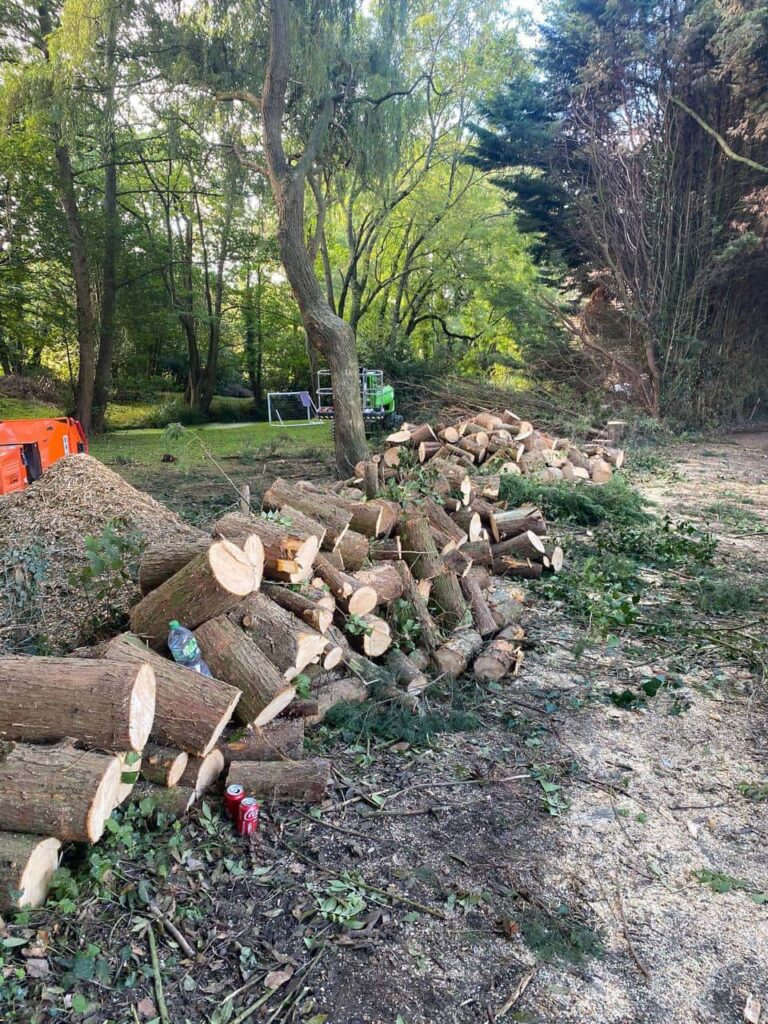Introduction
Crown reduction is a common tree surgery technique that involves carefully reducing the size of a tree’s canopy to improve its overall health and structural integrity. One of the key benefits of crown reduction, which often goes unnoticed, is its ability to promote better water and nutrient distribution throughout the tree. This is especially important for trees growing in urban environments or those under stress due to environmental factors. In this article, we will explore how crown reduction enhances the flow of water and nutrients, contributing to the long-term health of trees.
The Role of Crown Reduction in Tree Health
1. Optimising the Tree’s Canopy Structure
A tree’s canopy is responsible for photosynthesis, where the tree produces its food and stores nutrients. However, when the canopy becomes too dense, it can create competition among branches for light, water, and nutrients. This can lead to an imbalance, with some parts of the tree receiving insufficient resources to thrive. By performing crown reduction, we carefully remove specific branches, reducing the overall size and density of the canopy. This improves light penetration and airflow, allowing the remaining branches to receive the necessary resources for healthy growth.
2. Improved Water Distribution
One of the key benefits of crown reduction is improved water distribution. Over time, a dense canopy can create a barrier, limiting the amount of water that reaches the soil. When the canopy is too thick, it can block rainfall and prevent water from reaching the root system efficiently. Through crown reduction, we help open up the canopy, allowing rainwater to reach the soil more easily. Additionally, the reduction of excess branches helps the tree to distribute water more effectively across the remaining healthy branches and roots, supporting better growth overall.
3. Nutrient Flow Enhancement
Nutrient distribution is another critical aspect of tree health that crown reduction can improve. When a tree’s canopy is overgrown, the tree has to work harder to send nutrients through the branches to the outermost leaves. This can lead to uneven nutrient distribution, with some parts of the tree being overfed while others suffer from a lack of nutrients. By reducing the size of the canopy, we help to balance nutrient flow, ensuring that all parts of the tree receive what they need to remain healthy. This can improve the overall vigour of the tree, making it more resistant to diseases and environmental stress.
4. Better Root System Health
A well-maintained crown supports a healthier root system. With crown reduction, we can reduce the canopy size and alleviate the pressure on the tree’s roots, which may be struggling to support an overly large tree. When the root system is under less strain, it can better absorb water and nutrients from the soil, improving the overall stability and growth of the tree. This reduction in stress helps to maintain a more balanced and sustainable growth cycle, allowing the tree to thrive for years to come.
5. Reduction of Pests and Diseases
A dense canopy can also create an environment conducive to pests and diseases. Overcrowded branches can trap moisture, creating damp conditions where fungal diseases and insects thrive. By thinning out the canopy during crown reduction, we allow more sunlight and air to penetrate the tree, which helps to dry out the branches and discourage the growth of harmful fungi. Additionally, reduced congestion means fewer places for pests to hide, leading to a healthier tree overall.
Conclusion
Crown reduction is a vital practice for maintaining the health and vitality of trees, particularly when it comes to improving water and nutrient distribution. By reducing the canopy size, we help optimise the tree’s ability to absorb water, distribute nutrients, and grow more effectively. This technique also reduces the risk of disease, strengthens the root system, and encourages overall tree health.
At Newmarket Tree Surgeons, we specialise in crown reduction and other tree surgery services that promote long-term health and vitality for your trees. If you’re noticing signs of stress in your trees or simply want to ensure their continued well-being, contact us today for expert advice and professional tree care. Let us help you maintain the beauty and health of your trees for years to come.
Call us on: 01638 591 692
Click here to find out more about Newmarket Tree Surgeons
Click here to complete our contact form and see how we can help with your tree needs.

